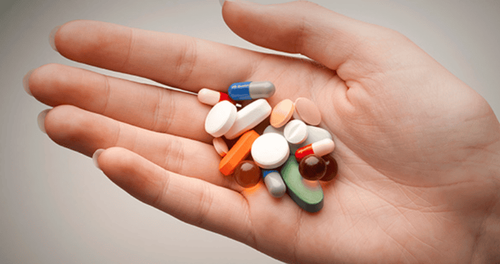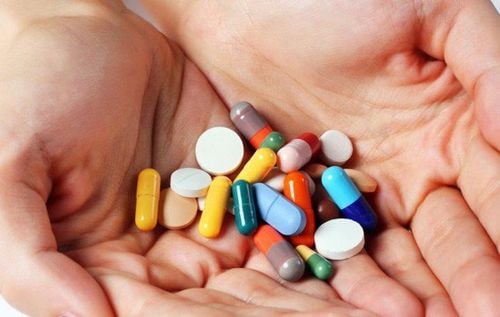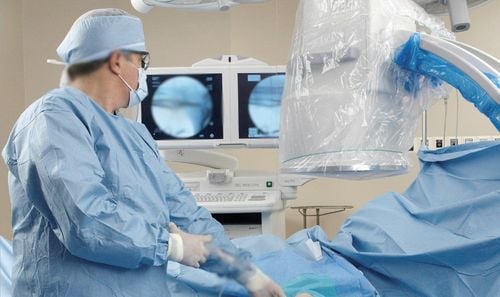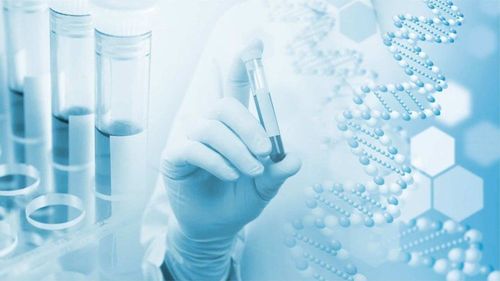This is an automatically translated article.
The article was professionally consulted by Assoc. Prof. Dr. Doan Mai Phuong - Deputy Head of Laboratory, Vinmec Times City International Hospital.Antibiogram is a technique that plays an important role in limiting bacterial resistance. According to the World Health Organization (WHO), Vietnam is on the list of countries with the highest antibiotic resistance in the world. The number of drug-resistant strains of bacteria is increasing at an alarming rate. So what is an antibiotic chart?
1. Antibiogram definition
Antibiogram is a method performed to determine the sensitivity of the tested antibiotic to pathogenic bacteria, which also means to detect antibiotic resistance of the test bacteria.Nowadays, there are many methods of antibiogram, in which the method of antibiotic diffusion paper in agar is applied most commonly thanks to its simple technique and easy implementation.
2. Subjects performing antibiogram
In all cases, the patient was suspected of having a bacterial infection and at risk of antibiotic resistance.Cases where the patient has a fever (symptoms of infection) and has not used antibiotics at the time of admission, priority should be given to antibiotic mapping to achieve high results.

3. Antibiogram method
3.1. Samples
Specimens are taken from the sites of organs where bacteria grow causing infection in the patient. Commonly taken patient samples are blood, urine, sputum, nasal fluid, oropharyngeal fluid, cerebrospinal fluid...After collection, this specimen will be cultured on different environments for bacteria to cause disease development. From there, pathogenic bacteria will be isolated on the appropriate culture medium to select and perform antibiogram.
3.2. Antibiogram methods
There are many methods of antibiogram as followsQuantitative method to find MIC, dilution of antibiotics in agar or broth to determine the minimum concentration of antibiotic inhibiting bacteria. The qualitative method of antibiotic disc diffusion in agar (Kirby Bauer) is often applied to determine the susceptibility of bacteria to different antibiotics. Method to detect enzyme produced by bacteria capable of destroying antibiotics (enzyme beta lactamase).
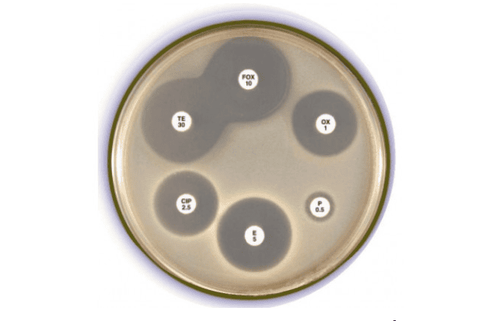
3.3. Antibiotic diffusion method in agar
The method of diffusing antibiotic paper in agar or the Kirby - Bauer method is the simplest and most popular method because it is easy to carry out daily in laboratories with many different scales.Steps of antibiotic diffusion technique in agar:
Medical staff collect patient samples and then culture them on agar plates containing special nutrient medium for culturing pathogenic bacteria. Selection of pure strains of pathogenic bacteria by isolation and identification. An appropriate amount of bacteria is taken and spread on the agar plate, and the antibiotic discs are placed in the agar plate (antibiotic plates are round pieces of paper impregnated with antibiotics with a certain concentration). The agar plates were incubated at 35 - 37 ̊C. After 24 - 48 hours, read the results: the antibiotic from the paper disc diffuses into the agar to inhibit the growth of bacteria, thus creating a circle without bacteria, also known as an inhibitory zone, appearing on the surface of the skin. agar plate surface. Based on the diameter of the inhibitory zone, we will determine the sensitivity of the antibiotic as well as the resistance of the bacteria. The diameter of the inhibition zone is proportional to the degree of sensitivity. For example: + Diameter ≤ 11mm: Bacteria resistant to antibiotics.
+ Diameter 12 - 15mm: Intermediate.
+ Diameter ≥ 16mm: The antibiotic is sensitive to pathogenic bacteria.
From the results of the antibiotic chart, the doctor will select the antibiotics with high sensitivity to give the patient a treatment regimen.
Factors leading to errors in antibiotic results such as: Agar, bacteria and antibiotic-impregnated paper.
4. Meaning of Antibiogram
Identifying and identifying pathogenic bacteria, and at the same time assessing the sensitivity of that antibiotic to pathogenic bacteria helpsClinically, doctors will choose the best antibiotic, give a regimen appropriate treatment for each patient. Avoid overuse of antibiotics to reduce antibiotic resistance of bacteria. Gather epidemiological information on resistance of important pathogenic bacteria to currently available antibiotics. From there, develop guidelines for the use of antibiotics in treatment when antibiotic results are not available. Vietnam has responded to the WHO's call "No action today, no cure tomorrow" and is one of the leading countries in developing the National Action Plan to combat antimicrobial resistance since 2013 until 2020 (Decision No. 2174/QD-BYT dated June 21, 2013), with the goal of accelerating activities of drug resistance prevention and control, improving the effectiveness of disease prevention and control, medical examination and treatment . Antibiogram technique helps to choose the most suitable antibiotic, avoids overuse of antibiotics, contributes to minimizing antibiotic resistance of bacteria.
Antibiogram helps prevent the proliferation of bacterial strains. When an infection is suspected, an antibiogram should be performed. Each citizen joins hands to contribute to the cause of health care, protection and improvement.
Please dial HOTLINE for more information or register for an appointment HERE. Download MyVinmec app to make appointments faster and to manage your bookings easily.





